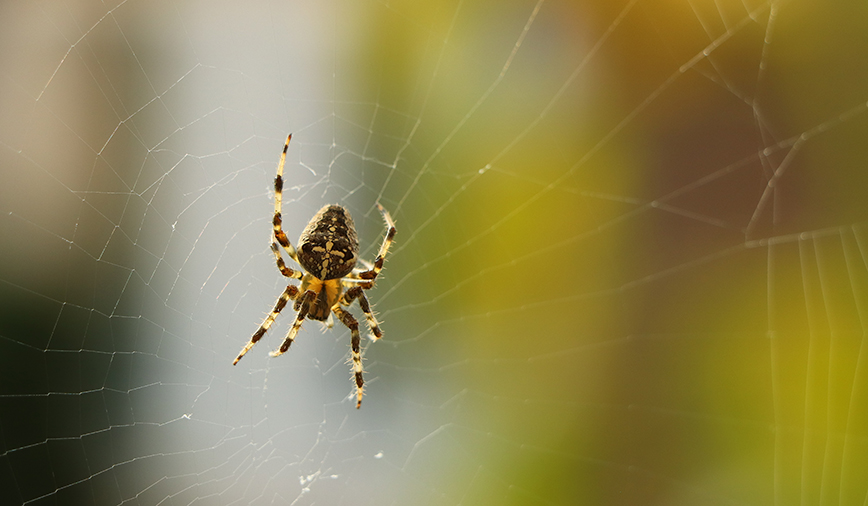Regular readers of this space might recall that, last winter, a critter took up residence inside my vehicle. (If you were one of the many people who wrote or called in with a car critter solution, thank you! But the rodent had other plans; it moved on before I was able to put any of your suggestions into action.)
So now it’s time for round two. Only now, instead of in the truck, the creature is living on the truck. Specifically, between the driver’s side mirror and the door.
This time around, I’m not expecting a lot of feedback, since this critter is—or at least should be—a welcome addition to anyone’s summertime fauna list. The visitor this month is…drum roll please…a spider.
Not just any spider, mind you. This spider is an orbweaver, a member of a family that will become ever more visible as we progress through summer and into fall. They’re the spiders that spin the “quintessential” round webs consisting of rays and spirals. Look for them near porch lights, windows, bridge railings… Anywhere that draws bugs will also draw these voracious bug eaters.
I believe “my” spider is an Araneus diadematus, also known as the barn spider, diadem spider or cross spider. Of these, I think the latter is the most fitting, not because she’s grouchy but because this eight-legged beauty sports an honest-to-goodness cross on her back.
It’s not too heavy to bear, though. And technically it’s on her abdomen, not her back. But it’s cool nonetheless. The white dots that form the cross actually are cells holding crystals of guanine, a byproduct of protein metabolism. The mark is harder to see on lighter-colored individuals but readily apparent on the mottled, reddish-orange individual hanging on my mirror.
Except for that conspicuous mark, cross spiders look very much like some of our other Araneus species, many of which are native. A. diadematus is not. It’s an import from Europe. Seeing how “my” spider likes to travel, it isn’t hard to imagine her ancestors sailing here from the Old Country, holding tight in their webs and feasting on all sorts of sea insects as they made their way to the New World.
On one of our latest adventures, just the other day, the spider and I went for a ride down Randall Road. Luck was with us, and we hit most of the lights green. But such good fortune also meant that Miss Spider was routinely subjected to wind speeds of nearly 50 m.p.h. So was her web.
Sensing something was amiss, the spider retreated to the safety of the plastic casing around the mirror, while the web flapped and swayed. But do you know what? When I arrived at my (our?) destination, the intricately woven web had hardly a strand out of place.
Indeed, spider silk is amazing stuff. It’s five times stronger than steel, when compared on a weight-to-strength basis. It’s as tough as Kevlar—the material used in bulletproof vests. It can absorb energy and stretch to 140% of its length, yet not bounce back, as so many flies and moths have learned.
And it’s also the reason why so many of these spiders get killed this time of year. By spinning their webs in obvious places like windows and door frames, the Araneidae often end up squished by the business end of broom.
Happily, I know of at least one web-spinner who, barring any unforeseen traffic incidents, will live out her days on a red Dodge Dakota.
Tonight we’re going to Dairy Queen!
Pam Otto is the manager of nature programs and interpretive services for the St. Charles Park District. She can be reached at potto@stcparks.org or 630-513-4346.

